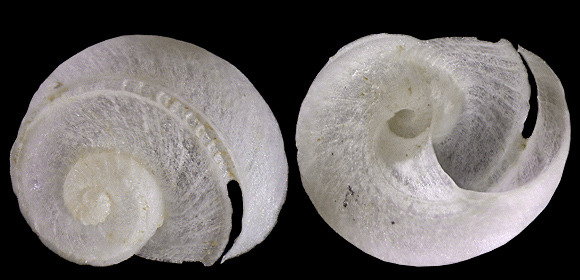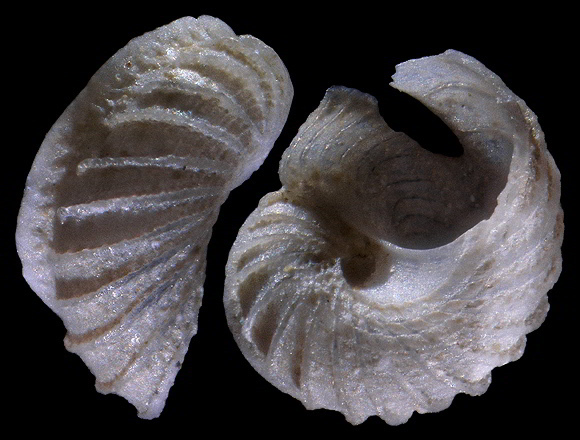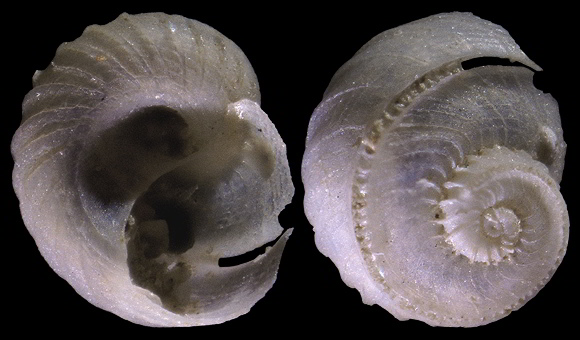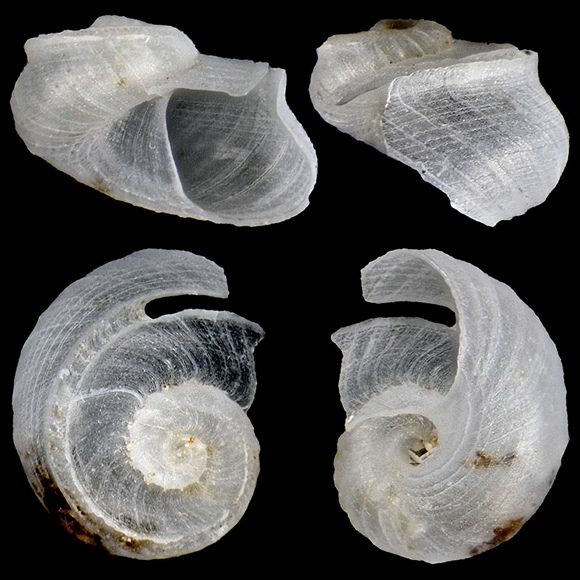
Grazer and deposit feeder in the infralittoral down to the continental shelf. The synonymy describes the species: cancellata, decussata, plicata, striatula…
250m deep, Alborán island. 1,3-1,5mm.

D’Orbigny describes the new genus Scissurella as follows: « Shell univalve, free, umbilicated, with a lowered spire; aperture subcircular, without canal, lips disunited and without peristome; their right edge is cut by a deep fissure that followed the increase of the whorls, obliterated itself at a small distance from the edge of the aperture, and traced on the back of the shell a kind of keel. » – A. D. d’Orbigny: “Monographie d’un nouveau genre de mollusque gastéropode de la famille des trochoides”, Mémoires de la Société d’Histoire Naturelle de Paris series 2 vol. I, Paris 1824,
p.343.
150m deep, Messina Strait, SW. Italy. 1,75mm.

« Shell oval, white, translucent, fragile, with a flattened summit, having three whorls, the top of which is furnished with high transverse ribs spaced from each other, and whose underside shows the same ribs but more salient and practically sharp; the space between the coasts is almost united and shows only very slight roughnesses. The two edges of the fissure form two beads which leave between them, in the obliterated part, an interval marked by close and very pronounced transverse lines; the umbilicus is surrounded by circular striae, the mouth is almost quadrangular, the lips are sharp. » – op. cit. p.344.
Above, the species in d’Orbigny, op. cit. plate XXIII.

« Animal of a hyaline yellow-whitish colour, with purplish markings. […] Test carinated with three whorls on the spire, oval, with a flatten summit ; carina rather large and deep ; transversal striae quite pronounced, longitudinal striae weaker ; some costae on the two first whorls, usually almost fading at the beginning of the third one. Color yellowish-white to greyish brown. […] Rather common in all european waters, but especially in the Mediterranean. Along our coasts I always met with it amongst debris of Zosteras ; it appears not to inhabit in less than 10m of depths, down to 35-40m ; it lives on all the bottoms with coralligen or Zosteras… »

– (CC BY-NC-SA) –

Palavas-les-flots, Gard, S. France. 1,04mm.
Original pictures provided by S. Clanzig (FR).
– (CC BY-NC-SA) –




Original pictures provided by S. Clanzig (FR).
– CC BY-NC-SA –

Left: between suture and selenizone; right: on the base.

